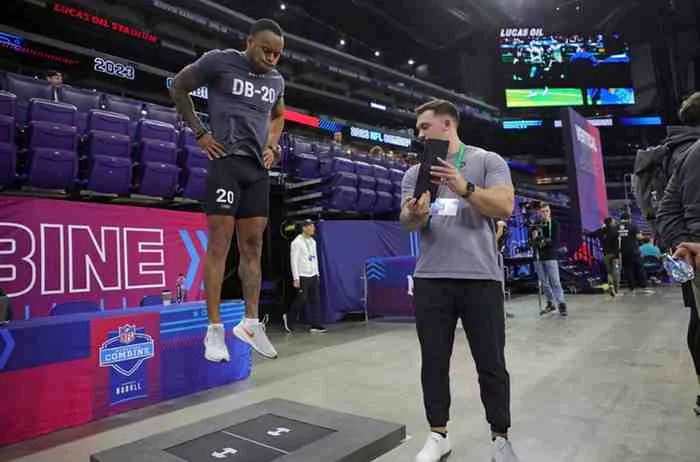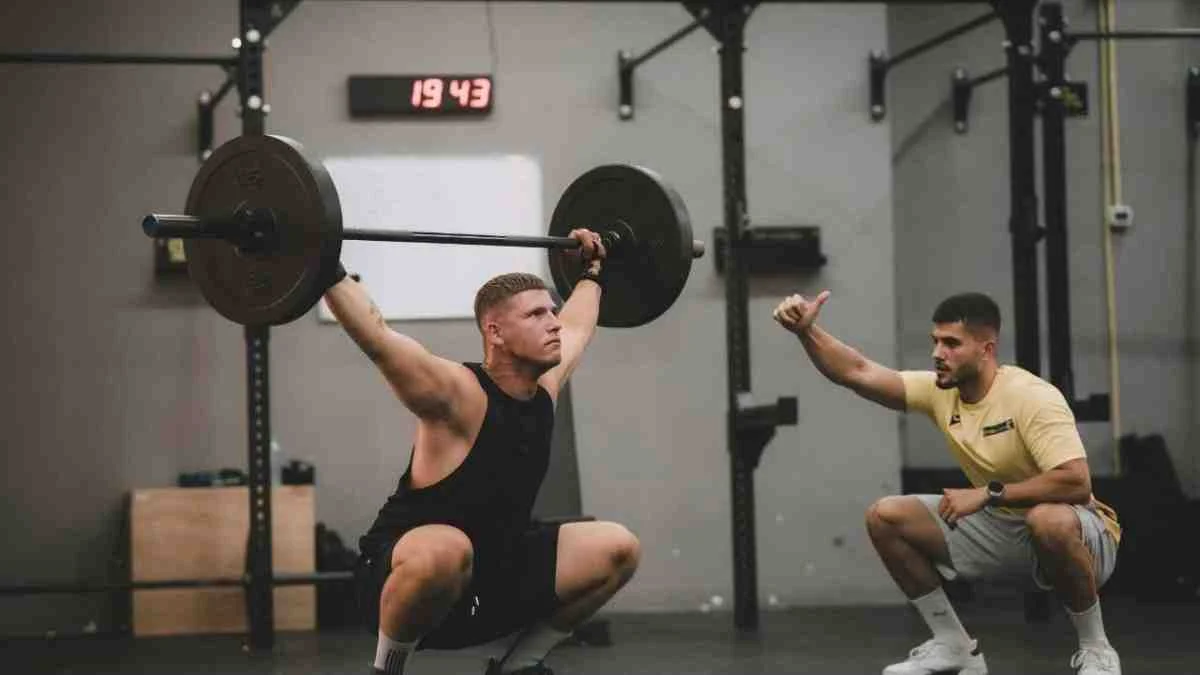[mashshare]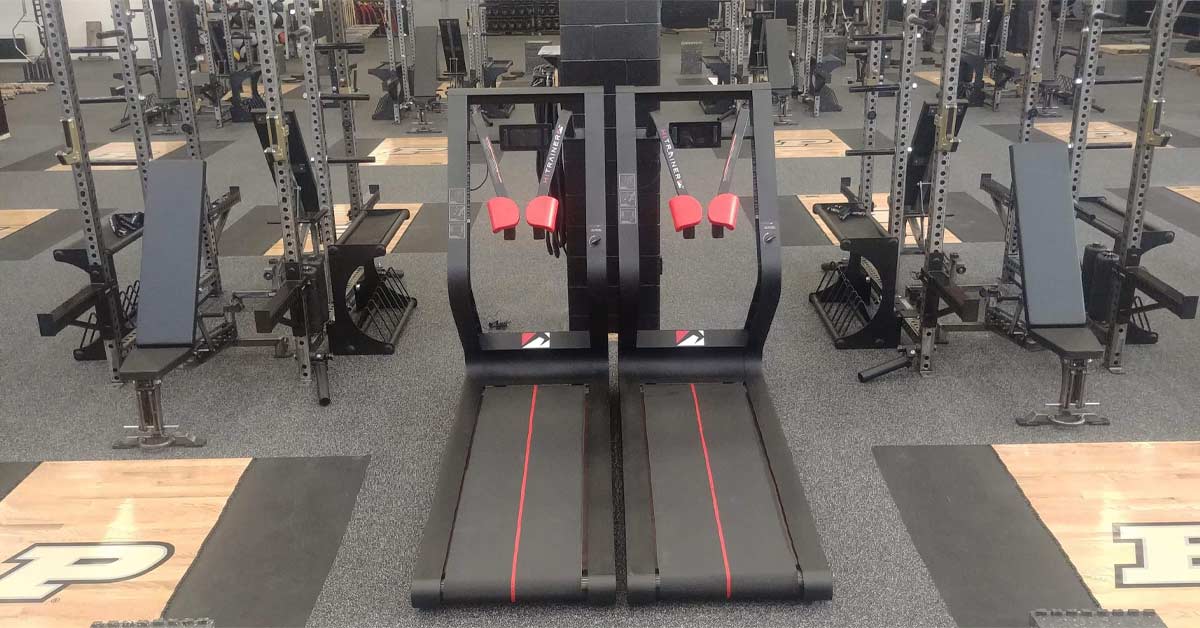
“Speed kills” is a cliché that is no less true for being over-repeated and under-trained. The fact is, time, equipment, and staffing constrain coaches to quantify progress and athletic development in pounds and highlight lifts. From an athletic development angle, it isn’t a lack of strength that keeps holding an athlete back on the field, but their ability to deploy power effectively and at speed.
“Within your sport, no matter which sport and with very few exceptions, you must agree that the speed of motion of competition actions are a significant determinate regarding the competition outcome… In either case, the velocity of sport motion is central to competition preparation, yet the principles of increasing the velocity of sport motions are not central to coaching education. Training for speed must be conceptualized as part of practice for sport” –James Smith
Speed work is often difficult to individualize in a team setting. It requires large dedicated spaces and important investments in staff and equipment. Combine those constraints with unrealistic expectations from the head coach about conditioning volume and frequency, and the result is that speed work often gets left by the wayside.
Why Train on a HiTrainer
The HiTrainer was initially developed as a tool to help football players, and power sport athletes in general, withstand the intense and concentrated bursts of energy required to be successful. It can be used to develop repeat sprint ability (RSA), increase athlete resiliency, and manage programs and athletic development. The athlete is placed in a lean in this non-motorized trainer, simulating the late drive phase, and their chest rests on two pads with force sensors. This forward lean reduces joint impact, promotes increased ground force production (propulsion), and recruits the posterior chain in a safe sprint position that protects hamstrings during maximal effort.
Maximum effort sprints and interval training are integral advantages to training on a HiTrainer, says @hitrainer_pro. Share on XRepeat sprint ability describes the ability of an athlete to recover and maintain maximal effort during subsequent sprints or plays, and has obvious implications with team sports. Workouts to improve top field speed throughout the length of a game should include maximum effort, interval sessions, continuous volume, and neuromuscular sessions. The ability of an athlete to maintain their speed throughout competition affects injury rates, decision-making, and ultimately performance. Much like the goal of S&C training in season is to manage or eliminate athletic attrition, RSA is about managing that decline in a much shorter time frame. Maximum effort sprints and interval training are integral advantages to training on a HiTrainer.
Video 1: Quantifying strength and speed with HiTrainer Director of Performance, Eric Joly.
Great athletes and teams are often durable ones. Whether due to focusing on one sport too early, over-competing/under-recovering, or a simple muscular imbalance, athletes are at even greater risk of injury than ever before. Injuries affect athletic development and seasons, and increasing athlete resiliency throughout the season means longer playoff runs and more success. The proper incorporation of acceleration-based protocols into your training programs will better prepare your athlete for competition year after year and reduce soft tissue injuries in the posterior chain.
A great illustration of this is how sprinting on a HiTrainer mitigates the potential for hamstring injuries by strengthening them through use while limiting the lengthening and eccentric loading of the upright sprinting position. Derek Hansen makes a great case for incorporating acceleration protocols for prehab/rehab and performance in general. In addition, athletic trainers can make use of the HiTrainer’s force sensors to capture left and right leg forces and diagnose potential imbalances or rehabilitate existing injuries with data.
The #HiTrainer helps coaches quickly evaluate groups of athletes for conditioning, power, and speed, says @hitrainer_pro. Share on XDeveloping athletic or individual programs is an involved and difficult process, and that is often before we include speed. Having a tool like the HiTrainer enables coaches to evaluate large groups of athletes quickly for conditioning, power, and speed. These variables can be used to customize goals and chart progress, and as a baseline to monitor athletes in season.
If something isn’t measured, it is difficult—if not impossible—to manage, and a system that is repeatable and easy to use, and provides actionable data, is extremely valuable to any coach. You can prove that your athlete is better conditioned and faster while adjusting their training according to how they are feeling, as well as what they are producing. I wrote about balancing tactical training and time in the gym with the help of data and baselines in season in “Fatigue Profiling with Athletes During the Competitive Season.”
Non-Motorized Treadmills
One of the questions we frequently answer at HiTrainer is what the difference is between a curve treadmill and a HiTrainer. Coaches who ask this question usually want to make a purchase to complement what their facility already offers. Both machines are non-motorized and benefit from engaging more muscle groups than the typical treadmill, and given their newness and popularity, such questions are to be expected.
While I am sure there will be more in-depth explorations of what curve treadmills are appropriate for, our experience has shown them to be very effective for endurance training and tempo runs. Their belts carry a good deal of momentum, however, and this limits their practicality/safety for interval training while reducing their value for acceleration training. For power sports like football, where explosiveness, change of direction, and the ability to be in the right place down after down matter, gradually building up speed or floating around the field aimlessly is not the right training approach.
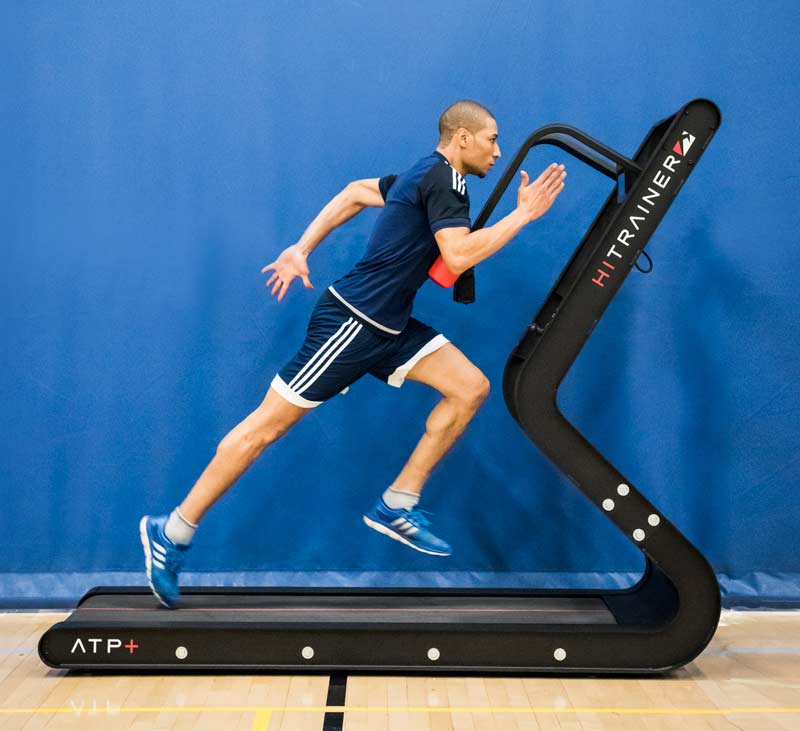
What Can It Do?
A treadmill is just a treadmill until it isn’t. Coaches can utilize a HiTrainer to free up turf space for high value coaching while incorporating sprints, resistance training, and conditioning work into one. Having a strip of turf in a gym is a recipe for collision with other athletes either sprinting or doing sled work and there is never enough room. With a HiTrainer for acceleration and maximum effort work, coaches can utilize their turf space for agility, mobility, and sport-specific work.
Sled work has become a popular proxy for horizontal force production and athletes do seem to enjoy it. However, this means removing coordinated arm movement and it can mean poor posture. It also encourages athletes to overload sleds while increasing their ground contact times. Taken together, these factors can make an athlete tired, but not faster—a better alternative outside of a HiTrainer would be to get athletes to hill sprint.
A HiTrainer can be loaded with up to 300lbs of resistance, and athletes maintain an erect upright posture and arm swing. In addition, they are not limited to a certain distance before having to swing the unit or themselves around, but can continue on indefinitely. Speed work in the weight room has, until non-motorized treadmills, been extremely limited and treated as a separate area to work on outside or at another location. Experts increasingly point to low-volume, high-intensity work or micro-dosing to build speed. Hunter Charneski’s article on in-season football training talks about exposing football players to maximum velocity runs in-season to build speed and reduce injury.
Having the ability to incorporate maximum effort runs in the weight room quickly opens up a full range of training options to coaches without program interruption. Incorporating sprint interval training with active recovery is not just about building top speed or ground force production, but preparing athletes for their chosen sport. We see positive VO2max adaptations and submaximal endurance increases by training maximum effort, which is the reason we recommend sprint training for both power sports and endurance sports.
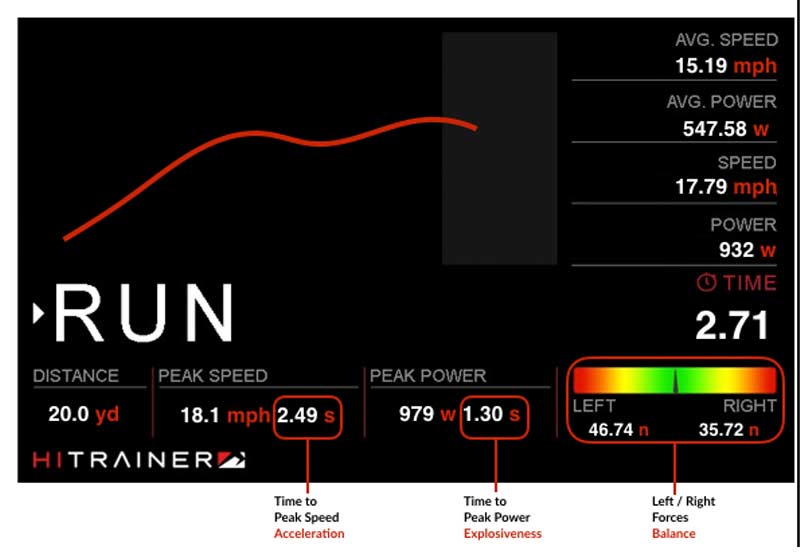
The Machine and Data
The HiTrainer ATP+ is 100% made in North America, built from large pieces of solid steel, and has been tested by NFL linemen and NBA players. It is appropriate for athletes 8 years old and up, and settings go from 4’8’’ to 6’10’’. An athlete rests against chest pads that house force sensors, which capture important data on power. With no motor, the ATP+ only requires a household plug to power the tablet that contains the present options for walking, sprinting, and interval training, and also collects the data. Peak speed and time to peak speed represent maximum velocity and acceleration capabilities of an athlete in the drive phase. Power is presented in watts, and is a function of belt speed and weight into the pads.
HiTrainer’s most exciting aspect may be its ability to measure time to peak power, or #explosiveness, says @hitrainer_pro. Share on XThe most exciting aspect of the HiTrainer that is otherwise difficult to measure efficiently is time to peak power, also known as explosiveness. Powerful athletes are always explosive and everyone from Olympic lifters to top sprinters chase this quality. Being able to measure how long it takes, in seconds, is the first step to making progress.
Although it had previously been mentioned as a tool for all athletic trainers, left and right leg forces are something that every coach will immediately see the value with. Whether you believe in activating muscles or not, seeing a problem clearly reflected in the data is the first step to correcting a movement pattern, strengthening a weaker muscle, and restoring an athlete to balance. This will improve performance and reduce injury risk by helping an athlete remain as symmetrical as possible.
Developing Responsiveness and Explosiveness
HiTrainer was developed to condition athletes to the rigors of competitive action while making them more responsive and explosive. Athletes love to sprint, and are underserved when programs focus mainly on vertical force production. Acceleration should be an integral part of the development process, and training the right energy pathway, removing time/space limitations, and developing quick athlete turnaround is what the HiTrainer is for. Incorporating this high-performance tool into a strength and conditioning program will bring speed into the weight room and faster athletes to the field.
Since you’re here…
…we have a small favor to ask. More people are reading SimpliFaster than ever, and each week we bring you compelling content from coaches, sport scientists, and physiotherapists who are devoted to building better athletes. Please take a moment to share the articles on social media, engage the authors with questions and comments below, and link to articles when appropriate if you have a blog or participate on forums of related topics. — SF
[mashshare]



